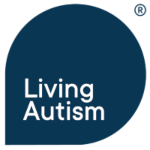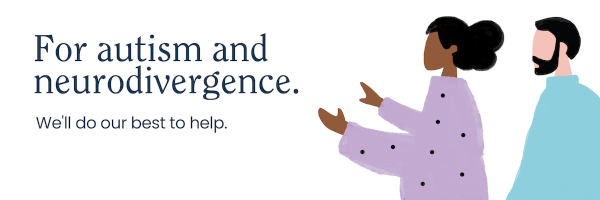This article on autism and the importance of toys is offered by Elaine Nicholson, an experienced counsellor of autistic children and adults.
The importance of toys

Often, autism does not come alone, and this is what I tell my clients. It can come with many co-occurring conditions, such as dyspraxia, attention deficit hyperactivity disorder (ADHD), anxiety, dyscalculia, and dyslexia, to mention just a few.
In the counselling space, the client often does not come alone. The client will often arrive with a soft toy or toys to hand. I’m not talking about little children either; I’m talking about grown adults, late teens, young adults, and 40+ adults. The toy or toys may be brought from a carrier bag and placed next to the client on the counselling sofa. As a therapist, you are observing the client and their toys. So, what does this mean? How do you, as a therapist, process this? I can explain this to you with little difficulty based on the vastness of my experience in the field.
My experience
I mention my experience because working in any sector where autism features requires academic knowledge of the condition and how it affects the individual and experiential learning. I may offend some people who are new to the field of autism and who feel that they’ve “nailed it” in a short space of time, but I am speaking from a place of years’ old wisdom, and I would like you, as a parent, partner or practitioner, to listen.
There is knowing about autism and developing a good academic baseline, and there’s understanding of autism, truly understanding autism. Autism isn’t simply Continuing Professional Development (CPD). Understanding autism is a visceral process. You feel it in your heart and get it in your gut. There are layers also. Layer upon layer of experience after experience after experience. Like building a ten-foot wall with filo pastry. If the two mesh, then we see a formulaic expression like so:
Formula:-
Academically knowing autism + Experientially understanding autism = fully authentic acceptance and inclusivity.
Autism and the importance of toys
I digress, but I do so because the soft toys and their connection to autism issues may be seen by you if you are a professional, perhaps only once or even twice, and if you are a parent who despairs at their 25-year-old daughter with the twenty teddy bears that go everywhere with her, then read on.
A therapist or other professional lacking autism experience may easily deduce that these toys have to do with what we call in counselling and psychotherapy “transitional object theory”. This theory was developed by a psychologist named Donald Winnicott in 1953. Winnicott referred to the teddies and blankets that young children carry as “transitional objects”. These transitional objects help children reduce anxiety and adapt to a moving environment, comforting them as they transition through unknown and unpredictable territories.
Some of this is true for the autistic individual. Their toys are their transitional objects. However, they are so much more than that to autistic individuals, as I have found, and remember, I’m not just talking about children; I am talking about autistic individuals of all ages.
Freddie and Arthur
Freddie is an autistic high-flying businessman. He was diagnosed aged 12 as having “Asperger’s syndrome”. He is so high-flying that he is among the stars! Freddie resides in a different country than the one he was born in and has navigated this well. He has made millions, if not billions, from his contribution to technology. Freddie is a quiet man in his mid-forties with a brain like a computer. When he married his wife, Helen, she had to agree not only to love and care for him, but he insisted that she also take vows, promising to love and care for Arthur, his toy bear from childhood.
Freddie organised a ceremony for this to happen. The ceremony was a long way away from the lavish 250-guest ceremony for himself and his wife-to-be that was to follow, but to Freddie, it was just as important, if not more important. Helen loved Freddie so much – and still does, I might add – that she agreed to “marry” Arthur rather giggly.
I see Helen and Freddie for couples counselling, with Arthur in tow, of course. Their reason for coming to counselling is to enable better communication between them. At this juncture, they have only been married for one year. Freddie is international through his work, so they have virtual counselling. However, throughout the session, I notice on his screen that Freddie frequently looks lovingly at Arthur, his weary-looking teddy bear, weary through years of being loved too much. His wife glances sideways, wishing her husband would look at her like he looks at Arthur. Freddie’s facial expression is one of peace and harmony towards Arthur, but when he must look at his wife, his expression denotes latent fear. Freddie wonders if Arthur considers that he has been neglectful in communicating with Helen, but he shared that Arthur thinks not. Freddie said that Arthur thinks that Helen should be more understanding of Freddie’s business commitments, and if she needs more communication, she should go to her sister’s house for someone to talk to.
Han and his girls
Han is in his mid-thirties and brings his plushies to therapy. There are several in his bag always. They are all female characters. Each has a name and a special way of dressing. He lines them up on the counselling sofa, and picks them up occasionally to gently stroke. His eyes soften as he strokes them, and his voice lowers and his vocal tone warms. It is as if Han is speaking to a lover.
Han has never had a lover. He would like a girlfriend desperately, but in the place of a human girlfriend, he has what he describes as “my girls”. His girls lie in bed with him at night and give him innocent cuddles. They are kind to him and always say nice things, unlike in the real world where his parents berate him daily for not having a job and outsiders have mocked him. Han is too anxious to hold down a job, which his parents don’t quite fully understand; besides, being at work would mean not being able to access his girls, and that fear of separation fills Han with dread. His girls are his lifeline, and they help him get up and face each day. Needless to say, when I see Han, I see Anna, Mary, Lisa, Julie, Felicity, Maddie, Lucy, Loraine and Kim too, and in the session, all of their voices must matter.
Adele and her penguins

Adele is in her mid-twenties and consults with me for post-traumatic stress and abandonment issues. She is a poor love. Neglected by her parents when they separated and found new partners and created new families, Adele was despatched to her grandparents, who, thankfully, raised her with love, whilst her parents ignored her existence as they started afresh. Our time is spent working mainly on Adele’s abandonment issues, which are huge, and which continue. Everyone seems to abandon Adele. The doctor who can’t see her for weeks, the dentist with a ten-month waiting list, the pet groomer who can’t wash her dog until next month, and so on. All these occurrences feel like abandonment to her. It might not be actual abandonment, but it feels like abandonment to Adele.
I know I must not be one minute late when Adele and I consult by video. If I am, the abandonment fears kick in for her, and the therapeutic component of our meeting is destroyed as Adele mulls over and over whether she had done something wrong for me to be late and not on time. A session of my reassuring her follows, which isn’t counselling. It then becomes a “tea and sympathy” session, which isn’t what she is paying for, while I, in turn, feel fraudulent
and somehow professionally diminished.
Autistic Adele has a special interest. Having a special interest is common to many autistic individuals. Adele’s special interest is penguins. She knows all there is to know about penguins. Adele has a collection of toy penguins, all of whom have a name, personality, and a voice. She consults them daily for advice. Adele is too anxious to work, so she sits on her computer, day in, day out, searching all kinds of information. Still, every step of every way is guided by the penguins, whom I have been informed have “differing levels of expertise, wisdom and knowledge” according to Adele. The penguins are her friends and confidantes. She does not have any friends or confidantes in real life.
Not just a toy – another voice
These soft toys are not just toys. They are not just “transitional objects” either. They are, most importantly, the voice of the autistic person, and it is therefore essential that professionals working with an autistic individual and their toy(s) realise this. Additionally, parents must realise this. I know of one chap – aged 19 – who came close to taking an overdose of pills when his mother threatened to throw his Teletubby special bear in the bin after a heated argument. Thankfully, mother realised the precariousness of her threat in the nick of time and asked her son for forgiveness while promising his Teletubby toy a secure and long existence going forward.
A diagnosis of autism is given when an individual struggles with qualitative communication and interaction alongside rigid and repetitive behaviours and thinking patterns. Toys have the potential to aid the voice of an autistic person. Toys say what cannot be confidently told by the person. Toys are friends when real friends do not exist. A toy is a predictable wife, while a human wife is loving, though scarily changeable. The autistic toy owner is, therefore, not being childish or silly. The autistic toy owner has, in fact, been highly resourceful in learning how to help themselves to cope better in a world that is ill-designed for them. Indeed, living life in a minority position can feel very harsh sometimes, with autistic people accounting for 1- 2% of the global population. Needs are often unmet, and voices are unheard.
Using toys to help navigate life’s complex pathway should be commended, not disparaged. An autistic individual’s toys need to be listened to and respected. That way, you’ll get to know the individual better.
Elaine Nicholson, MBE
Counsellor
NB: All vignettes are anonymised scrambled composites of real-life client examples
___________
If you need help looking for services for an autistic child or adult, we will do our best to help. Click below for the Autism Placement Support Service.
__________



